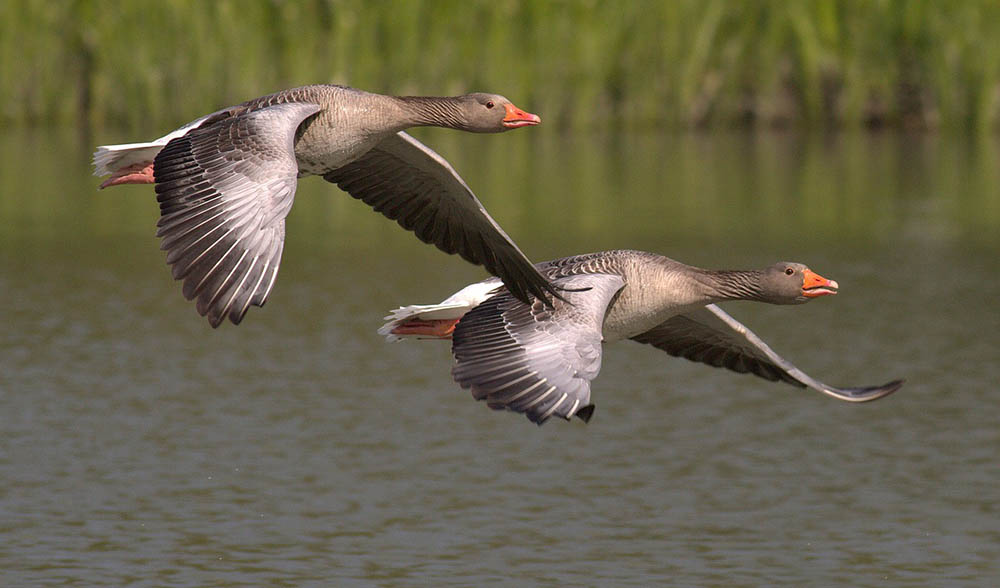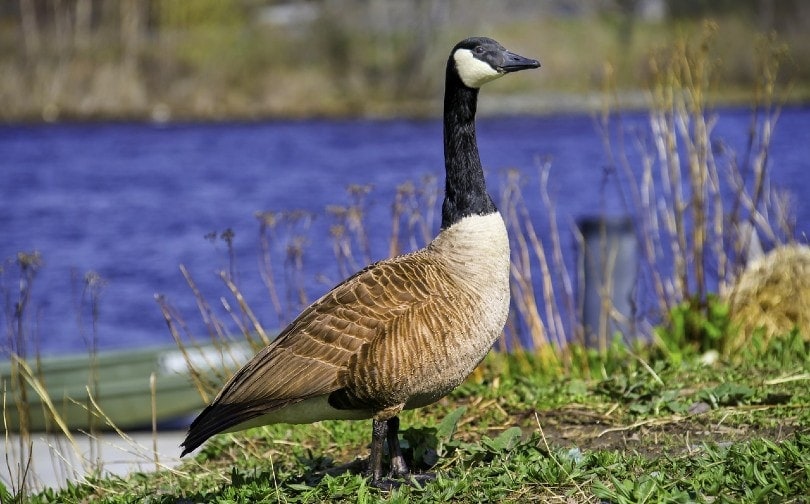Can You Hunt Canada Geese? Everything You Need to Know!
Last Updated on

Spring and fall Canada goose migrations are among the greatest spectacles of the natural world. These giant birds fly in large V formations that capture the attention of people all over the country. For those living in or near Canada goose nesting grounds, however, the glorious spectacle is often thwarted by the nuisance and danger that these birds can pose to the people and animals around them. But there’s a great deal of misinformation about the protection of this species and whether the birds can be hunted.
The short answer is, yes, you can hunt Canada geese, but they are also protected by the federal government. They can only be hunted during certain seasons, in specific locations, and by following specified hunting regulations.

What is the status of Canada geese in Canada?
The population of Canada geese was once on the decline, but these birds have multiplied in recent decades. The Canada goose population is now estimated at 7 million, and you can find giant flocks of geese all over the country.
Geese are protected in Canada under the Migratory Birds Convention Act. This conservation act prevents the birds from being harmed or hunted excessively. It doesn’t mean they can’t be hunted, though, just that certain regulations must be followed.

What are the regulations for hunting Canada geese?
Specific hunting regulations vary by province, including season dates and bag limits. Hunting season is at the beginning of the bird’s migration south, usually the beginning of September. To hunt Canada geese, you must possess a valid Migratory Game Bird Hunting Permit and have a Canadian Wildlife Habitat Conservation Stamp attached to the permit. These documents are issued by the federal government and are valid in all provinces and territories.
There are additional licensing requirements in each province, so it’s extremely important to verify the specific regulations for where you will be hunting. Licenses are issued according to zone number; each province has hundreds of different hunting zones that you can apply for.
- All migratory game birds must be hunted with non-toxic shot.
- Possession of lead shot is prohibited.
- Daily bag limits and possession limits for each province or territory must be followed.

While we won’t go into the exact limits for each province, here are a few examples of what they look like.
- In Alberta, the daily bag limit for Canada geese is eight, but not more than five can be white-fronted geese. The total season possession limit is 24, with no more than 15 white-fronted geese.
- In Nunavut, the daily limit is 15, but there’s a catch: In islands or waters in James Bay that are west of 80°15’W longitude and south of 55°N latitude, no more than five geese can be Canada geese. The seasonal limit is unlimited but only 20 for Canada geese in the listed coordinates.
As you can see, knowing and understanding the regulations for the specific province or territory you intend to hunt in is critical.

Summary
While Canada geese are a protected species in Canada, they can still be hunted. There are specific rules and regulations for hunting geese, and a special license must be obtained. The rules vary according to province or territory and can sometimes be difficult to navigate, so it’s important to thoroughly understand the regulations before you hunt.
Featured Image Credit: 258817, Pixabay
About the Author Chelsie Frasier
Chelsie is a freelance writer who is passionate about pets, animals and all things optical. She currently lives in rural Alberta, Canada with her husband and two sons, and is a pet parent to a Border Collie, four cats and four horses.
Related Articles:
Can You Use Binoculars to Look At Stars? How to Choose the Right Pair
10 Types of Hummingbirds in Arkansas (With Pictures)
8 Types of Hummingbirds in Nebraska (With Pictures)
5 Types of Hummingbirds in Idaho (With Pictures)
3 Types of Hummingbirds in Mississippi (With Pictures)
8 Types of Hummingbirds in Kansas (With Pictures)
5 Types of Hummingbirds in West Virginia (With Pictures)
5 Types of Hummingbirds in Ohio (With Pictures)
